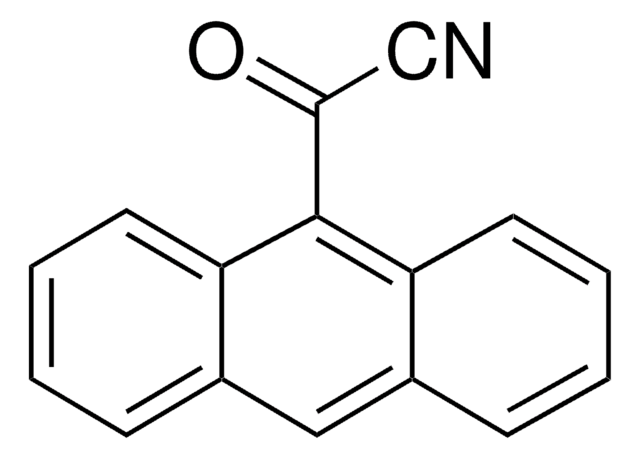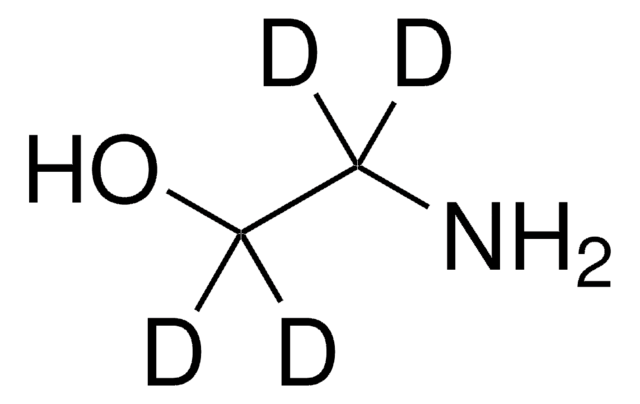15014
Ethanolamin
≥99%
Synonym(e):
2-Amino-ethanol, 2-Aminoethylalkohol, ETA, MEA, MEA 90, MEA-LCI, Monoethanolamin
About This Item
Empfohlene Produkte
Dampfdichte
2.1 (vs air)
Qualitätsniveau
Dampfdruck
0.2 mmHg ( 20 °C)
Assay
≥99%
Form
liquid
Selbstzündungstemp.
1436 °F
Expl.-Gr.
17 %
Verunreinigungen
≤0.5% water (Karl Fischer)
Glührückstand
≤0.05% (as SO4)
Brechungsindex
n20/D 1.454 (lit.)
bp
170 °C (lit.)
69-70 °C/10 mmHg
mp (Schmelzpunkt)
10-11 °C (lit.)
Dichte
1.012 g/mL at 25 °C (lit.)
Kationenspuren
Fe: ≤10 mg/kg
Funktionelle Gruppe
amine
hydroxyl
SMILES String
NCCO
InChI
1S/C2H7NO/c3-1-2-4/h4H,1-3H2
InChIKey
HZAXFHJVJLSVMW-UHFFFAOYSA-N
Suchen Sie nach ähnlichen Produkten? Aufrufen Leitfaden zum Produktvergleich
Anwendung
- Katalytische Leistung und saure Analyse der ionischen Chloraluminat-Flüssigkeit: Untersucht die Wirkung von Ethanolamin auf die katalytischen Eigenschaften ionischer Flüssigkeiten bei der Ölsynthese (Hu et al., 2024).
Sonstige Hinweise
Signalwort
Danger
Gefahreneinstufungen
Acute Tox. 4 Dermal - Acute Tox. 4 Inhalation - Acute Tox. 4 Oral - Aquatic Chronic 3 - Eye Dam. 1 - Skin Corr. 1B - STOT SE 3
Zielorgane
Respiratory system
Lagerklassenschlüssel
8A - Combustible corrosive hazardous materials
WGK
WGK 2
Flammpunkt (°F)
195.8 °F - Pensky-Martens closed cup
Flammpunkt (°C)
91 °C - Pensky-Martens closed cup
Persönliche Schutzausrüstung
Faceshields, Gloves, Goggles, type ABEK (EN14387) respirator filter
Hier finden Sie alle aktuellen Versionen:
Besitzen Sie dieses Produkt bereits?
In der Dokumentenbibliothek finden Sie die Dokumentation zu den Produkten, die Sie kürzlich erworben haben.
Kunden haben sich ebenfalls angesehen
Unser Team von Wissenschaftlern verfügt über Erfahrung in allen Forschungsbereichen einschließlich Life Science, Materialwissenschaften, chemischer Synthese, Chromatographie, Analytik und vielen mehr..
Setzen Sie sich mit dem technischen Dienst in Verbindung.








